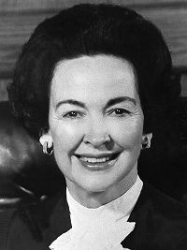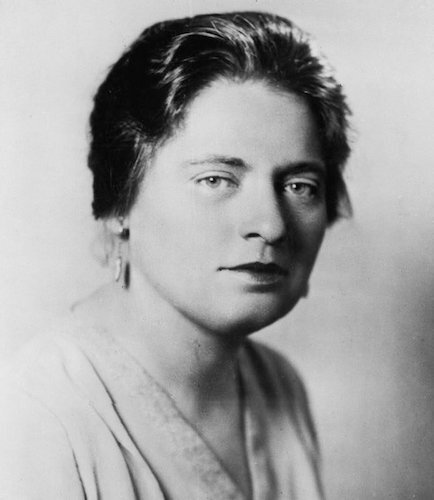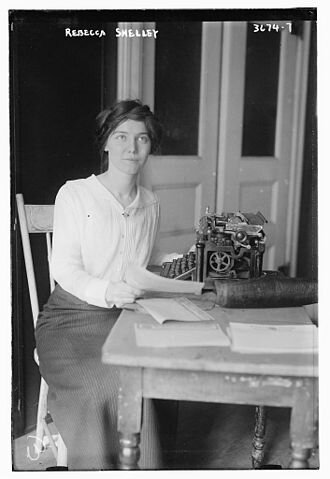From suffragettes to the state Supreme Court: 9 women from Calhoun County history you should know
Sojourner Truth has an important place in Calhoun County's history. And there are many more local women whose place in the past has gone largely unnoticed. Here are nine of them.
Editor’s note: This story is part of Southwest Michigan Second Wave’s On the Ground Battle Creek series.
“How can you know the history of our country when you only know 50 percent of it?” asks Jody Owens, a volunteer with the Battle Creek Historical Society.
Her question refers to the lack of a consistent focus on the important contributions women have made throughout the history of the United States and closer to home in Calhoun County. While she appreciates that March is designated Women’s History Month, a dedicated time to highlight achievements made by women, she says their work needs to be held up and celebrated in the same manner as their male counterparts.
“History is so lopsided without them,” says Owens while sitting at a table in her office brimming with file folders full of newspaper clippings that feature women of note in Calhoun County. “I think it’s a question of people realizing that women were human and did things besides being barefoot and pregnant.”
Local examples of this include the more well-known female historical figures including Sojourner Truth and Merze Tate. Requests on information about these two women make up the majority of inquiries that Owens gets from people interested in local women’s history, but she says other women who had a major impact on the local, state, national, and international stage have largely gone unrecognized.

Recently, at the request of Second Wave’s On the Ground project, she took some time to dig through the archives and offered up the names of some of these hidden figures and tell us why they are worth knowing about.
Mary Barber became the first “dollar a year woman” (she accepted $1 a year as a token salary to support the war effort) in Washington, D.C. In 1941, she accepted an appointment by the Secretary of War as a food consultant to the Quartermaster
Department where she was responsible for planning menus for the entire United States Army. Employed as a dietician with the Kellogg Co., she was granted a leave of absence from 1941 to 1945 to serve as a consultant. Prior to joining Kellogg’s in 1923, Barber was already well-known in the field of Home Economics. When she retired 25 years later, she had become an internationally recognized expert in the field of dietetics, a field of science that determines how nutrition and good eating affect our overall health. Its main purpose is to educate everyone on the importance of making proper and smart dietary choices as it also offers a strong focus on public health.
Lenna F. Cooper, a nurse by training, came to Battle Creek in 1898 and for several years worked for Dr. John Harvey Kellogg caring for his children. During that time she began thinking about the possibility of dietetics rapidly developing into a science. She enrolled at Drexel Institute in Philadelphia in 1908 and came back to Battle Creek where she was appointed director of the newly-created School of Economics at the Sanitarium founded by Dr. Kellogg. From there she went on to hold several prestigious positions, including that of Food Director of the University of Michigan beginning in 1930. During World War I she served as the supervising dietitian for the U.S. Army. Cooper was the founder of the American Dietetic Association.

Mary Coleman was the first woman to serve as a Justice and Chief Justice of the Michigan Supreme Court. She was elected to the state Supreme Court in 1972 and served for 10 years until her retirement in 1982. Coleman became a resident of Calhoun County after moving with her husband, also an attorney, to Marshall. Her career in public service began in 1961 when she became a Probate and Juvenile Court Judge for the county. In 2000 she was honored by the State Bar of Michigan with a Michigan Legal Milestone titled, “Pioneer, Advocate, Woman, Legend.” She also is a member of the Michigan Women’s Hall of Fame.
Lorena Hickok may be best-known for her decades-long friendship with Eleanor Roosevelt which began in 1928 when she was a reporter assigned to cover Franklin Roosevelt’s time as New York’s governor and blossomed when she was assigned

by the Associated Press to cover his presidential campaign. Well before her rise to national prominence, she lived in Battle Creek, graduated from Battle Creek Central High School, and worked as a reporter for the “Battle Creek Enquirer” where she established her reputation as a noted sports writer. Her journey to Battle Creek from her native South Dakota was the result of efforts, by a woman concerned for her safety and well-being, who wanted to get her away from an abusive father and secure a safe environment for her with her deceased mother’s cousin who lived in Battle Creek.
Minnie Kimball, born in 1879, was one year away from graduating from Medical School but never finished, choosing instead to marry Arthur S. Kimball who came from a family of physicians in Battle Creek, many of whom were also named Arthur Kimball. After his death at the age of 46, Minnie was faced with the task of financially providing for the five children she had with her husband at a time when women didn’t work outside of the home. Nevertheless, she persisted, taking on the job of director at a local community center and women’s projects under the Works Progress Administration, a program created by President Franklin D. Roosevelt during the Depression. She also became a Welfare Agent in Calhoun County. Her hard work and tenacity paid off with her ability to put all five of her children through college on her own.
Mary Angell Bryant Mayo, who was born in Convis Township in 1845, was a self-educated woman whose knowledge and expertise would take her on speaking engagements to places like San Francisco, considered “far away” at the time, and set her on a lifelong journey to help farm women improve their lives by taking pride in themselves. She strived to convince people and organizations that women’s problems and achievements should receive the same attention as those of men. Much of her work was done under the auspices of the Grange, which promoted agricultural interests, emphasized education, and opened its doors to women as well as men. Mayo held several high-level positions with Michigan’s Grange, including that of the first Chairman of the Committee on Women’s Work. A historian at Michigan State University referred to her as the “leader of Michigan’s rural women” in the last generation of the 19th century.
Mary Jennings Pendill became a resident of Battle Creek when she and her family moved here in 1855 from western New York state. Although in her 40’s when she moved here and with six children to raise, she established herself as a leader in the Temperance and Suffrage movements at the local, state, and national level. She was a member of the Battle Creek Women’s Suffrage Association, organized in 1870, and was among delegates to a state convention who were challenged to raise $20,000 – the amount needed to bring their suffrage campaign to a successful conclusion. Pendill donated a watch, which became known as the Pendill Watch. It was sold repeatedly to various supporters and each time it sold the proceeds went to the Suffrage movement. In addition to her work to secure more rights for women, she also had a hand in closing down several local watering holes in her work with temperance.

Ann M. Shafer was described as a feminist, labor and community leader, and a tireless advocate for equality by the Michigan Women’s Hall of Fame which inducted her in 1992. Her leadership abilities began to emerge when she began a job with the Kellogg Co. in 1946. She was a member of Local 3 of the American Federation of Grainmillers and in 1968, before Michigan work laws for women were changed to match the federal laws, she filed a lawsuit against the company seeking to ensure that women had equal access to opportunities including jobs that were posted. That lawsuit resulted in some changes with others yet to come. In 1974, Shafer helped to form the Coalition of Labor Union Women and later served as the organization’s vice president for the Great Lakes Region and Michigan. In addition to her union work, she was a Calhoun County commissioner and was a fierce advocate for the passage of the Equal Rights Amendment, among other major national movements.
Rebecca Shelley took a circuitous route to Battle Creek and had already made a name for herself internationally as a peace activist. After teaching school in Leelanau County for two years, she quit that job to attend the University of Michigan where she majored in German and graduated Phi Beta Kappa in 1910. She spent the next five years teaching in Germany where she met her fiancé, who died in World

War I. The severity of the world crisis and her personal situation led her to become a peace activist. She was a central figure in organizations and movements, including the Ford Peace Ship in 1915. In 1918 she came to the Battle Creek Sanitarium to recover from stress and exhaustion and purchased a trade journal, Modern Poultry Breeder, which she published through most of the 1920s. In the early 1950s she founded a Battle Creek chapter of the Women’s International League for Peace and Freedom. In 1959, she dedicated her Battle Creek property as the Peaceways Foundation. In 1964, she ran for vice-president on a Peace Party ticket with the cousin of the former president Herber Hoover, who also shared his name. From 1968 until 1977 she publicly dressed in mourning as a protest against the Vietnam War. She made extensive tours of Europe and South Asia, conducting peace vigils at embassies and war monuments.
Want to find out more about any of these women? Contact Jody Owens with Battle Creek Historical Society at (269) 660-9072.















